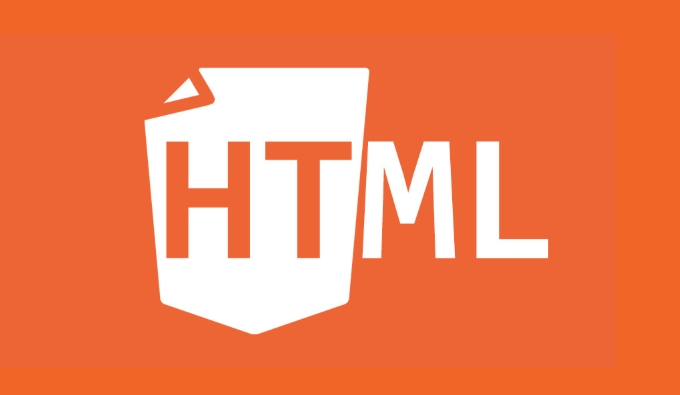To build a high-performance H5 dashboard, the key is to balance visual clarity with technical efficiency. 1. Optimize data processing and API calls, and use pagination or streaming, local cache, and anti-shake/throttling mechanisms to reduce request frequency. 2. Keep DOM lightweight, adopt virtual scrolling, avoid nested structures, component reuse and use animation with caution. 3. Optimize visual components and resources, select lightweight chart libraries, compressed picture formats, and reasonably control chart rendering. 4. Achieve responsive design without performance loss, prioritize the use of Flexbox or Grid layout, load resources by screen size, and adopt a mobile-first strategy.

If you're trying to build high-performance H5 dashboards, the key lies in balancing visual clarity with technical efficiency. Since H5 (HTML5) dashboards often run on mobile or web environments with limited resources, optimizing performance while keeping the interface responsive and informative is cruel.

1. Optimize Data Handling and API Calls
One of the biggest performance bottlenecks in dashboards is how data is fetched and processed. If your dashboard pulls large datasets from an API every time it loads, it's going to feel sluggish.
- Use pagination or streaming when dealing with large datasets instead of loading everything at once.
- Cache frequently used data locally using
localStorageorsessionStorageto avoid redundant API calls. - Implement debounce or throttle mechanisms for search or filter inputs so that the backend isn't overwhelmed by frequent requests.
For example, if you have a search bar that filters results in real-time, don't send a request with every keystroke. Instead, wait until the user pauses typing for 300ms before making the call.

2. Keep the DOM Lightweight
The more elements you put on the page, the slower it gets—especially on mobile devices. This is particularly true for dashboards filled with charts, tables, and widgets.
- Use virtual scrolling or lazy rendering for long lists or large tables. Only render what's visible or about to become visible.
- Avoid deeply nested structures. Each layer adds to rendering complexity.
- Reuse components where possible. Frameworks like Vue or React can help manage component reusability efficiently.
Also, remember that too many animations or transitions may look nice but can hurt performance. Use them sparingly and consider hardware-accelerated properties like transform and opacity .

3. Optimize Visual Components and Assets
Charts and images are common in dashboards, but they're also major contributors to slow load times.
- Choose lightweight chart libraries like Chart.js or lightweight wrappers around D3.js.
- Compress images and use modern formats like WebP.
- Don't over-render charts. If a chart isn't in view, delay its rendering until needed.
Also, be mindful of how much detail you show. For instance, showing thousandss of data points in a line chart might not be useful and will definitely slow things down. Aggregate or sample the data where appropriate.
4. Responsive Design Without Performance Cost
H5 dashboards often need to work across devices, but responsive design can introduce overhead if not handled carefully.
- Use CSS Flexbox or Grid instead of JavaScript-based layout adjustments.
- Load different assets based on screen size (eg, smaller images for mobile).
- Avoid excessive media queries that could bloat your CSS.
A good approach is to start with a mobile-first strategy, then scale up. That way, you're prioritizing performance on lower-end devices first.
Building a high-performance H5 dashboard doesn't require cutting-edge tools—it just needs smart optimization at every level: data handling, DOM structure, asset usage, and layout design. Most issues come from overlooked details rather than complex architecture problems.
The above is the detailed content of Building High-Performance H5 Dashboards. For more information, please follow other related articles on the PHP Chinese website!

Hot AI Tools

Undress AI Tool
Undress images for free

Undresser.AI Undress
AI-powered app for creating realistic nude photos

AI Clothes Remover
Online AI tool for removing clothes from photos.

Clothoff.io
AI clothes remover

Video Face Swap
Swap faces in any video effortlessly with our completely free AI face swap tool!

Hot Article

Hot Tools

Notepad++7.3.1
Easy-to-use and free code editor

SublimeText3 Chinese version
Chinese version, very easy to use

Zend Studio 13.0.1
Powerful PHP integrated development environment

Dreamweaver CS6
Visual web development tools

SublimeText3 Mac version
God-level code editing software (SublimeText3)
 Steps to draw dashboard using ECharts and Python interface
Dec 18, 2023 am 08:40 AM
Steps to draw dashboard using ECharts and Python interface
Dec 18, 2023 am 08:40 AM
The steps to draw a dashboard using ECharts and Python interface require specific code examples. Summary: ECharts is an excellent data visualization tool that can easily perform data processing and graphics drawing through the Python interface. This article will introduce the specific steps to draw a dashboard using ECharts and Python interface, and provide sample code. Keywords: ECharts, Python interface, dashboard, data visualization Introduction Dashboard is a commonly used form of data visualization, which uses
 What does h5 mean?
Aug 02, 2023 pm 01:52 PM
What does h5 mean?
Aug 02, 2023 pm 01:52 PM
H5 refers to HTML5, the latest version of HTML. H5 is a powerful markup language that provides developers with more choices and creative space. Its emergence promotes the development of Web technology, making the interaction and effect of web pages more Excellent, as H5 technology gradually matures and becomes popular, I believe it will play an increasingly important role in the Internet world.
 Build a Raspberry Pi monitoring dashboard in less than 30 minutes
Jul 16, 2023 pm 08:50 PM
Build a Raspberry Pi monitoring dashboard in less than 30 minutes
Jul 16, 2023 pm 08:50 PM
If you want to know how your Raspberry Pi is performing, then you probably need a Raspberry Pi dashboard. In this article, I'll demonstrate how to quickly build an on-demand monitoring dashboard to view your Raspberry Pi's CPU performance, memory, and disk usage in real time, and add more views and actions at any time as needed. If you already use Appsmith, you can also import the sample application directly and get started. Appsmith Appsmith is an open source low-code application building tool that helps developers easily and quickly build internal applications such as dashboards and admin panels. It is a great option for dashboards and reduces the time and complexity required by traditional coding methods. In this example dashboard, I display the following statistics
 How to distinguish between H5, WEB front-end, big front-end, and WEB full stack?
Aug 03, 2022 pm 04:00 PM
How to distinguish between H5, WEB front-end, big front-end, and WEB full stack?
Aug 03, 2022 pm 04:00 PM
This article will help you quickly distinguish between H5, WEB front-end, large front-end, and WEB full stack. I hope it will be helpful to friends in need!
 What Does H5 Refer To? Exploring the Context
Apr 12, 2025 am 12:03 AM
What Does H5 Refer To? Exploring the Context
Apr 12, 2025 am 12:03 AM
H5referstoHTML5,apivotaltechnologyinwebdevelopment.1)HTML5introducesnewelementsandAPIsforrich,dynamicwebapplications.2)Itsupportsmultimediawithoutplugins,enhancinguserexperienceacrossdevices.3)SemanticelementsimprovecontentstructureandSEO.4)H5'srespo
 H5: The Evolution of Web Standards and Technologies
Apr 15, 2025 am 12:12 AM
H5: The Evolution of Web Standards and Technologies
Apr 15, 2025 am 12:12 AM
Web standards and technologies have evolved from HTML4, CSS2 and simple JavaScript to date and have undergone significant developments. 1) HTML5 introduces APIs such as Canvas and WebStorage, which enhances the complexity and interactivity of web applications. 2) CSS3 adds animation and transition functions to make the page more effective. 3) JavaScript improves development efficiency and code readability through modern syntax of Node.js and ES6, such as arrow functions and classes. These changes have promoted the development of performance optimization and best practices of web applications.
 How to implement h5 to slide up on the web side to load the next page
Mar 11, 2024 am 10:26 AM
How to implement h5 to slide up on the web side to load the next page
Mar 11, 2024 am 10:26 AM
Implementation steps: 1. Monitor the scroll event of the page; 2. Determine whether the page has scrolled to the bottom; 3. Load the next page of data; 4. Update the page scroll position.
 H5: How It Enhances User Experience on the Web
Apr 19, 2025 am 12:08 AM
H5: How It Enhances User Experience on the Web
Apr 19, 2025 am 12:08 AM
H5 improves web user experience with multimedia support, offline storage and performance optimization. 1) Multimedia support: H5 and elements simplify development and improve user experience. 2) Offline storage: WebStorage and IndexedDB allow offline use to improve the experience. 3) Performance optimization: WebWorkers and elements optimize performance to reduce bandwidth consumption.






